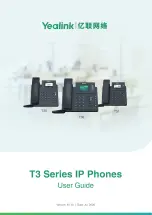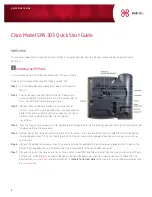
8
T
RUNKING
This chapter provides guidelines, limitations, and other important
information about how to implement the trunking function for
CoreBuilder
®
3500 systems. This chapter covers the following topics:
■
■
■
Key Guidelines for Implementation
■
■
■
■
Standards, Protocols, and Related Reading
You can manage trunking in either of these ways:
■
From the
bridge
trunk
menu of the Administration Console. See the
Command Reference Guide.
■
From the Define Wizard in the Bridge Trunk folder of the Web
Management software. See the
Web Management User Guide
.
Summary of Contents for CoreBuilder 3500
Page 44: ...44 CHAPTER 2 MANAGEMENT ACCESS ...
Page 58: ...58 CHAPTER 3 SYSTEM PARAMETERS ...
Page 86: ...86 CHAPTER 5 ETHERNET ...
Page 112: ...112 CHAPTER 6 FIBER DISTRIBUTED DATA INTERFACE FDDI ...
Page 208: ...208 CHAPTER 9 VIRTUAL LANS ...
Page 256: ...256 CHAPTER 10 PACKET FILTERING ...
Page 330: ...330 CHAPTER 12 VIRTUAL ROUTER REDUNDANCY PROTOCOL VRRP ...
Page 356: ...356 CHAPTER 13 IP MULTICAST ROUTING ...
Page 418: ...418 CHAPTER 14 OPEN SHORTEST PATH FIRST OSPF ...
Page 519: ...RSVP 519 Figure 94 Sample RSVP Configuration Source station End stations Routers ...
Page 566: ...566 CHAPTER 18 DEVICE MONITORING ...
Page 572: ...572 APPENDIX A TECHNICAL SUPPORT ...
Page 592: ...592 INDEX ...
















































